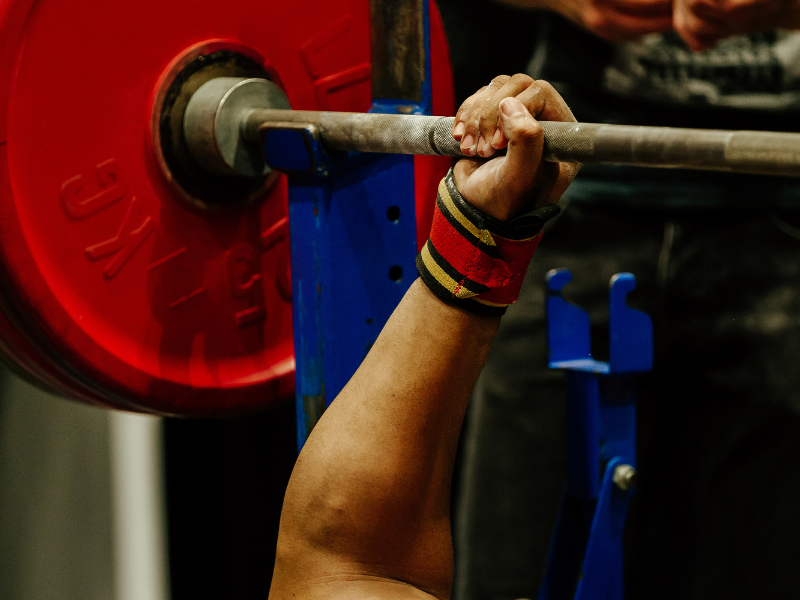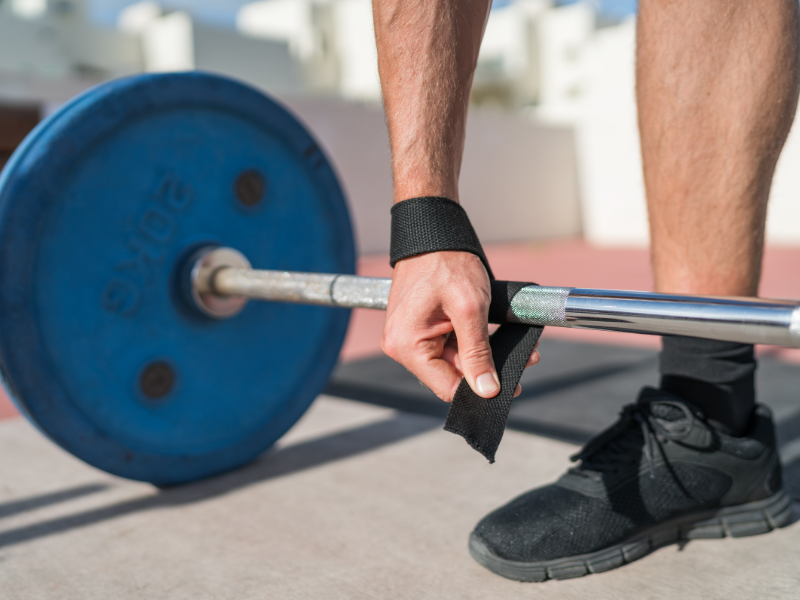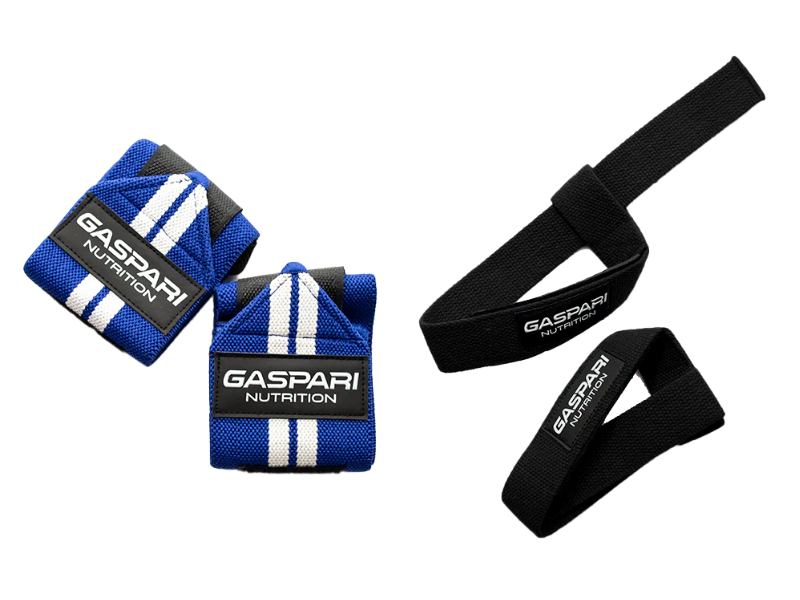Selecting between wrist wraps and lifting straps can greatly affect your workout efficiency. Wrist wraps offer essential support for pressing exercises, helping maintain proper form and alleviate wrist pain. Lifting straps, conversely, excel at pulling movements, enhancing grip strength and enabling lifters to manage heavier weights without grip fatigue. While wrist wraps provide joint stability and injury prevention, lifting straps are perfect for those aiming to boost their lifting capacity or overcome grip limitations. Gaspari Nutrition offers top-tier wrist wraps and lifting straps to get the best workout and the results you want.
Essential Insights Into Wrist Wraps vs. Lifting Straps
-
Wrist wraps provide support for pressing exercises like bench presses, while lifting straps aid in pulling movements such as deadlifts.
-
Wrist wraps improve grip and wrist stamina, enhance support during heavy lifts, and are crafted from high-quality materials for durability.
-
Lifting straps increase grip strength for heavy pulls, reduce forearm fatigue, and offer versatility in various lifts, particularly for intermediate lifters.
Choosing between wrist wraps and lifting straps can significantly impact your workout effectiveness.
These essential training tools serve different purposes in the gym. Understanding their distinct functions can help you optimize your lifting routine and potentially lift heavier weights.
Introduction
Wrist wraps and lifting straps have distinctive roles in weightlifting. However, both are training aids that help weightlifters lift more weight or perform more repetitions than they could manage without them.
What Are Wrist Wraps?

Wrist wraps are strips of cloth designed to provide wrist support and improve grip strength during heavy lifts. They help reduce wrist pain and grip fatigue, making them essential for exercises like bench presses and overhead presses.
Benefits of Wrist Wraps
Wrist wraps are an essential accessory for weight lifters and fitness enthusiasts. They offer multiple advantages that enhance performance and safety.
Improved Grip and Wrist Stamina
Wrist wraps provide a secure and comfortable grip for weight lifting, helping to reduce grip fatigue during pulling exercises. This allows you to lift heavier weights with less effort.
Enhanced Support During Heavy Lifts
The wrist support provided by wrist wraps aids in maintaining wrist stability, which helps avoid strains and injuries. This is essential for upholding proper form during heavy lifts and pressing movements.
Quality and Durability
Gaspari Wrist Wraps are made from high-quality materials, guaranteeing durability and long-lasting performance. The reinforced stitching and heavy-duty thumb loop contribute to their dependability, making them an essential item in your gym bag.
What Are Lifting Straps?

Lifting straps are designed to enhance grip strength by looping around the barbell or dumbbell. By relieving the pressure from your grip, these tools help you concentrate on the specific muscle group being worked without the concern of losing hold of the weight. This makes them ideal for pulling exercises and for those with weak grip strength or previous wrist injuries.
Benefits of Lifting Straps
Lifting straps are a valuable tool for anyone looking to improve their lifting performance, offering significant benefits that can elevate your training sessions.
Increased Grip Strength for Heavy Pulls
Lifting straps enhance grip strength during heavy pulls, helping you lift heavier weights by securing your grip, especially in exercises like deadlifts and rack pulls.
Reduced Forearm Fatigue
Using lifting straps reduces forearm fatigue, allowing focus on targeted muscle groups without grip failure, which is useful in high-volume training.
Versatility in Various Lifts
Lifting straps provide exceptional versatility for a wide range of lifts, encompassing both Olympic lifting and traditional pulling exercises.
Wrist Wraps vs Lifting Straps: Key Differences

Wrist wraps and lifting straps from Gaspari Nutrition serve different purposes in weightlifting. Wrist wraps provide stability for the wrist joint during heavy lifts, enhancing safety and comfort. They're particularly useful for pressing movements like bench presses and overhead presses. In contrast, lifting straps tie your hands to the weight, improving grip strength and allowing you to lift heavier weights.
When to Use Wrist Wraps
Wrist wraps are best used during pressing movements and overhead lifts. They are ideal for heavy lifts and should be reserved for max or heavy sets to provide wrist support and reduce grip fatigue.
When to Use Lifting Straps
Lifting straps benefit intermediate lifters after 3 months of training. They aid in pull exercises by handling heavier weights when grip strength limits performance. Due to safety concerns, straps should not be used for some overhead movements. They're especially effective for deadlifts, rack pulls, and rows, where grip fatigue can hinder performance.
Frequently Asked Questions
Can I use wrist wraps and lifting straps together?
Wrist wraps and lifting straps enhance lifting performance but serve different exercises. Wrist wraps are ideal for pressing exercises like bench presses and overhead presses, providing wrist support under heavy loads. Lifting straps excel at pulling exercises such as deadlifts and barbell rows, improving grip strength and reducing the risk of dropping weights. Most lifters find using them in their respective exercises maximizes benefits without overlap.
How do I choose the right wrist wraps or lifting straps?
Choosing the right gear depends on your exercise. Wrist wraps are ideal for pressing movements, offering support under heavy loads. Lifting straps are best for pulling exercises, enhancing grip strength, and allowing heavier lifts without grip fatigue. Understanding your workout demands will guide you in selecting the right equipment.
Can using wrist wraps or lifting straps prevent injuries?
Yes, wrist wraps or lifting straps can help prevent injuries. A wrist wrap can stabilize your wrists, reducing the risk of strains during heavy pressing exercises. Incorporating these tools can significantly decrease your risk of injury and improve your lifting experience.













































































Share:
Mastering the Five Day Split Workout
HMB Supplements: Benefits and When You Should Take Them